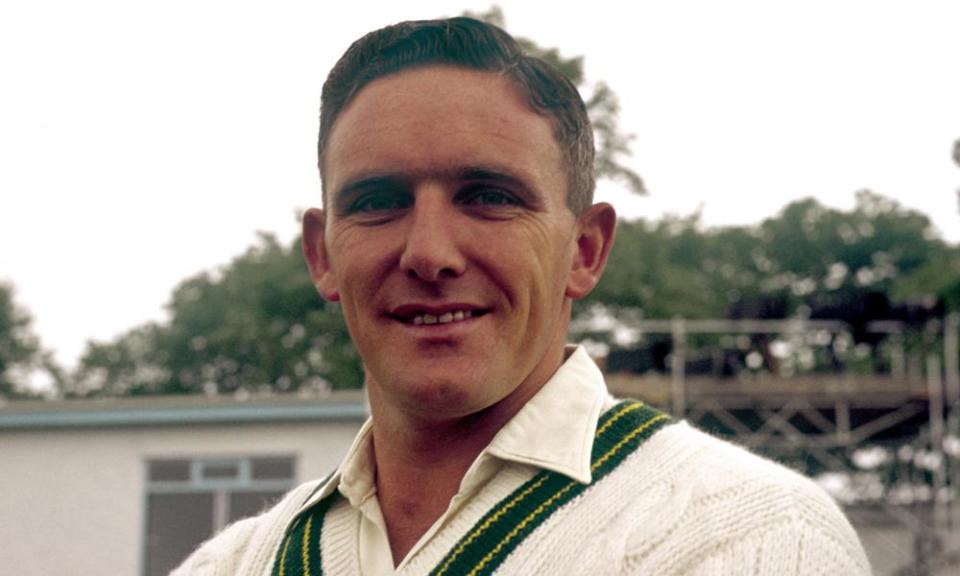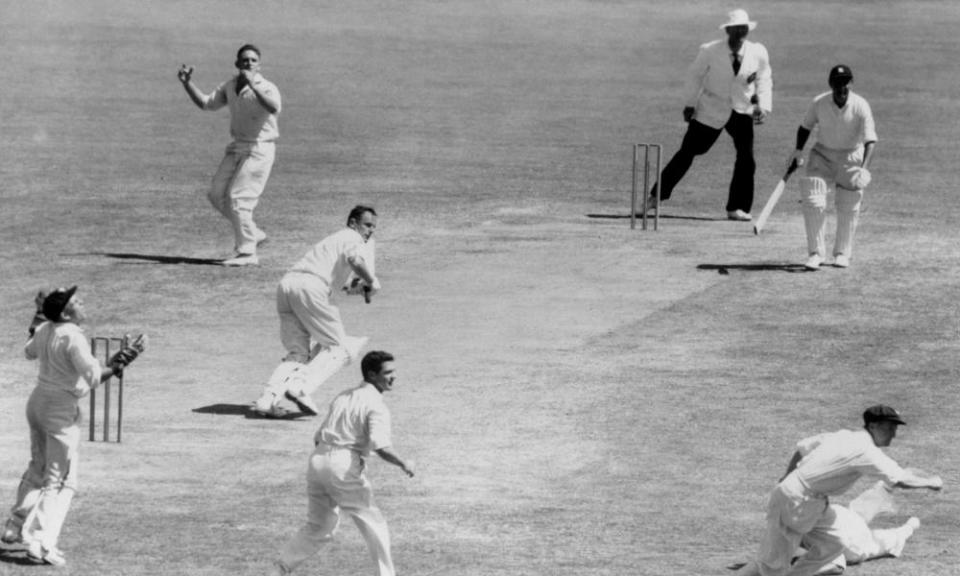Alan Davidson obituary

The cricketer Alan Davidson, who has died aged 92, was one of Australia’s finest opening bowlers and a key figure in his country’s pace attack during the 1950s and early 60s. A supremely controlled exponent of swing and seam, he took his Test wickets at 20 runs apiece – one of the lowest averages in the modern era – and aside perhaps from Pakistan’s Wasim Akram is generally considered to have been the greatest left-arm pace bowler in the game’s history.
Davidson had a lithe and fluid action that was allied to economy of effort: throughout his career he bowled off no more than 15 paces, yet generated considerable pace from such a short run-up, and could be very fast when he chose. He was also a swashbuckling lower middle-order batsman who scored nine first-class centuries. Many, including his long-time captain Richie Benaud, considered him a genuine all-rounder.
Although he was often described as broad-shouldered and burly during his career, Davidson was below average size as a youngster and only began to develop his 14-stone physique in his late teens, when he shot up to 6ft.
He was born in Lisarow, a farming hamlet in the Central Coast region of New South Wales, to Hilda (nee Clifton) and Keith Davidson. A natural sportsman from a cricketing family, after attending the local Gosford high school he became a bank clerk, and at 19 settled in Sydney when his employers moved him there, playing grade cricket for Northern District.
Soon he was picked for New South Wales, and after appearing in only three Sheffield Shield matches was selected in 1950, at the age of 20, for Australia’s reserve team tour of New Zealand. Against Wairarapa on that trip he took 10 wickets in an innings (10-29) and followed up with a century in the same match (157 not out) – a double virtually without precedent at any level of cricket.
After such a meteoric rise, however, Davidson spent the next two years on the sidelines as Australia decided to keep an eye on his progress. He continued to learn his craft with New South Wales but was rarely able to open the bowling there because the new ball was the preserve of two greats of the game, Keith Miller and Ray Lindwall.
In 1952 Davidson received three separate offers to play lucrative league cricket in England, but rejected them all on the basis that he wanted to remain on the radar of the national selectors at home.
Australia finally came calling again in 1953, when Davidson toured England and played his first Test at Nottingham in June that year. For his first four years with Australia he was a solid rather than spectacular performer, partly because he continued to operate in the long shadows of Miller and Lindwall. But Miller retired from Test cricket in 1956 and thereafter Lindwall’s appearances were more sporadic.
On the 1957-58 tour of South Africa, taking the new ball consistently for the first time, Davidson took 72 wickets. Over the next five years he became the most effective opening bowler in international cricket, as well as a dangerous, six-hitting presence with the bat and a superb fielder close to the wicket, where he acquired the nickname the Claw for his ability to hold on to difficult catches.

In the 1958-59 home series against England Davidson took 24 Test wickets at an average of 19 as Australia won 4-0, and in India in 1959-60 he had 29 wickets at under 15 apiece, including seven for 93 in the second Test at Kanpur.
He was widely held to be the main force behind Australia’s 2-1 victory in the wonderfully entertaining 1960-61 home series against a strong West Indies side, taking 33 wickets at an average of 18.55 runs. In the famous tied first Test of that series in Brisbane he became the first player to take 10 wickets and score more than 100 runs in a Test match – something only three other players have achieved since then.
Two successful series against England followed – away in 1961, when he took 23 wickets at 24.87 as Australia won 2–1, and at home in 1962-63, when he had 24 wickets in the drawn series at an average of 20, despite playing only three full Tests due to injury.
Having been chosen as a Wisden cricketer of the year in 1962, Davidson decided to retire after that series at the age of 33. He took a wicket off his final ball in Test cricket and did the same with his last delivery in the first-class game, with which he clean-bowled Garfield Sobers, who was playing for South Australia at the time.
In total Davidson played 44 Tests, taking 186 wickets at 20.53 each – an average bettered only by five other bowlers since the turn of the 20th century. He also scored 1,328 Test runs at 24.59 and in first-class cricket took 672 wickets at 20.90, with a batting average of 32.86.
Once his playing career had come to an end he served as president of the New South Wales Cricket Association (1970-2003), and as a national Test selector (1979-84). He was also on the boards of various community-minded organisations, including Surf Life Saving Australia and the Anzac Health and Research Foundation. In 1964 he was appointed MBE.
In 1952 he married Betty McKinley, and they had two sons, Neil and Ian.
• Alan Keith Davidson, cricketer, born 14 June 1929; died 30 October 2021

 Yahoo Sport
Yahoo Sport 






































